The Sexton II Self Propelled Gun
This Sexton MkII self propelled 25-pounder artillery gun can be found at the Cobbaton Combat Collection Museum, Chittlehampton, Umberleigh, North Devon, England. www.cobbatoncombat.co.uk
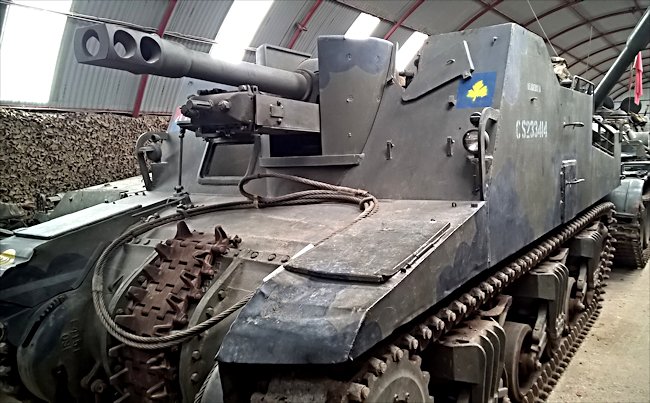
Sexton MkII Self Propelled Artillery Gun at the Cobbaton Combat Collection, North Devon
This Sexton was built in Canada in the early months of 1943. It never saw active service in WW2. It was sent to Portugal under contract, to strengthen the Portuguese Army. British big military vehicle dealer Ian McGregor went to Portugal in the 1980s and purchased a number of obsolete vehicles and bought them to the UK. This WW2 period Sexton was one of those vehicles.
Although it is known as the Sexton its official Army designation was 25 Pdr Self Propelled, Tracked. A Grizzly tank chassis (Canadian-built Sherman M4A1 tank) was used to mount the 25 pounder artillery howitzer on the top and enclose it in an open topped armoured fighting compartment.
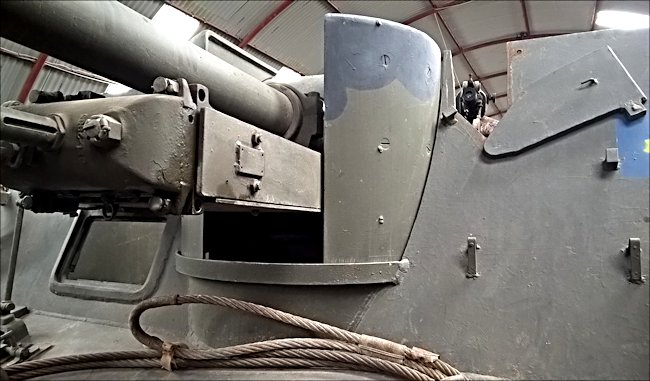
Canadian Sexton MkII Gun optics
The Canadian Ram tank (based on the American M3 Grant/Lee tank) was used for the early Sexton Mark I SPGs. You can visually identify which version of Sexton you are looking at by counting the spokes on the front wheel track sprocket. If it has 13 spokes it is a Sexton Mark I. If it has 17 spokes like this Sexton it is a Sexton Mark II. The combat weight of a Sexton fully loaded with 112 shells and fuel was around 25 tons. It required a 6 man crew: Commander, Driver, Co-driver and three gunners. The air cooled Continental R-975 9 cylinder radial petrol engine produced 400hp that gave the Sexton a top road speed of 25mph (40km/h) and only 3/4 mpg.
These aircraft style radial engines were prone to hydraulic lock when they had been left standing for a long period. Oil or petrol would run down into the bottom cylinder and when an attempt was made to start the engine the piston would hit the un-compressed liquid resulting in a broken crankshaft. The solution was to turn the engine over by hand first and if a lock occurred the plugs had to be removed from the bottom cylinder to drain off the liquid.
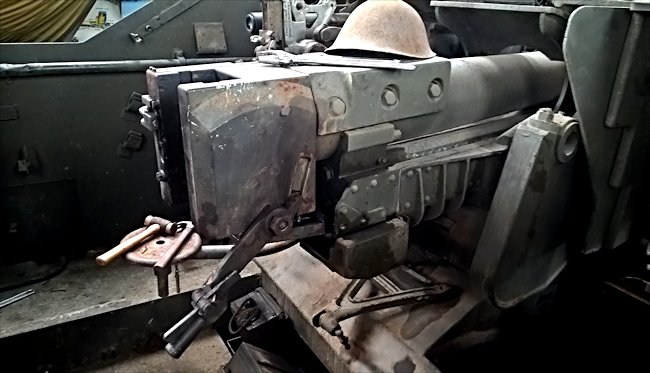
Preston Isaac of Cobbaton Combat Collection purchased the sexton with two engines. One had a broken crankshaft and the other had various ailments. Eventually one working engine was rebuilt from the two defective engines. That engine became damaged because of lack of use and Preston managed to buy three more engines.
Sexton Gun Crew Accounts
'Each gun was firing series of 'Five Rounds Gunfire' almost without pause, which meant that as one round went off, the gun was immediately reloaded and fired. Because the gun barrels had only four degrees of traverse either way, any directions outside those limits meant that the whole gun chassis had to be moved by the driver engaging gears, revving the engine and shunting this way and that, so the engines continuously had to be kept going more or less at half throttle, adding to the indescribable burden on the ears and increasing the tension of the gunners.'
'We fired high explosive shells into the target and were told (a rare occasion) that between us we managed to destroy at least six Panther Mk V tanks. We followed it up by joining in a regimental shoot of twenty-four guns onto a wood from which more Panthers were 'fished out', and Hill 112 was again momentarily ours.'
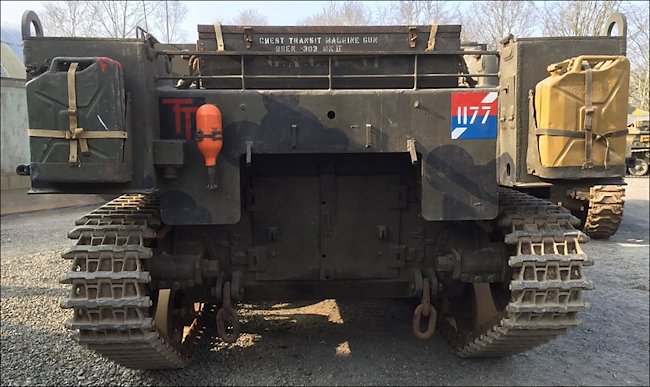
Rear view of the Cobbaton Combat Collection's Sexton 25-pounder artillery howitzer
'Working out an artillery barrage is a complicated mathematical procedure and in our tired state, working in near darkness and in expectation of a surprise visit by the enemy, it was heavy going. Map references have to be plotted on a gridded Artillery Board, so that the range and bearing of the targets can be calculated accurately. An artillery barrage is a procedure whereby a line of shells begins on a pre-established Start Line, then creeps forward at, say, 50-yard intervals, so allowing the attacking infantry to move forward behind its cover.'
' It was now Day 14 of Operation Bluecoat. At 0800 hrs on the 13th, we moved across country over open fields and came into action (726445), where we engaged in some desultory firing. Next day I moved the Troop at dawn and came into action almost immediately, moving again at 1340 hrs (765405). It seemed to be becoming a war of movement at last which was our prime role. On the 15th, we moved three times, once in the morning (745382), then in the afternoon (780368) and lastly in the evening (793376, west of St Vigor-des-Mézerets), which improved the morale of the men quite considerably.'
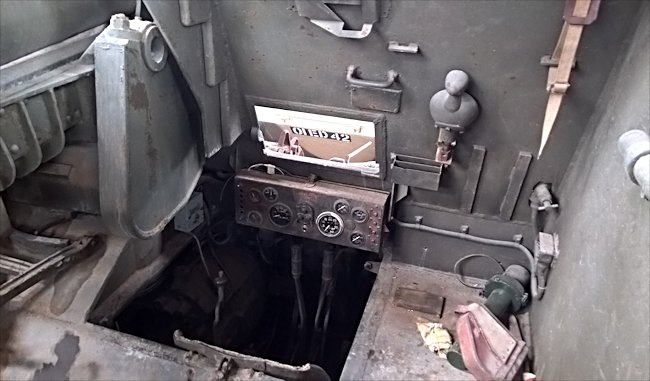
Drivers seat and lever controls in a Canadian Sexton MkII Self Propelled Artillery Gun
'The 16th was also a day of movement, for we moved twice, once at 1006 hrs (819334), and again at 1542 hrs (866271). On the 17th, we moved three (943245), where we were stonked by German 88mm guns, which was most unpleasant. It was a great relief to be on the move again. The Regiment was trained for mobile warfare and a static role, so efficiently done by the Field Artillery, was not entirely to our liking. Epsom and Goodwood, and the early part of Bluecoat, by the nature of things compelled us to adopt a field role, but we were eager to be up with the tanks again. A Sexton engine needs a few minutes running time to bring the oil pressure up to a certain point, otherwise damage can occur.'
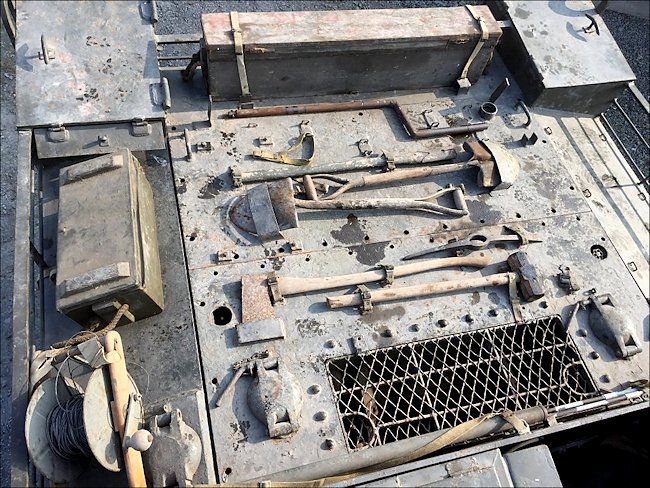
Tools strapped to the Sexton's Engine covers
'Each troop, a sub section of a regiment, was assigned four sextons. I hardly ever knew what we were firing at. Targets came by the dozen, and we responded quickly and efficiently. If only we had been given a little more information about the targets we were engaging, it would have given us a greater measure of encouragement, particularly when the gunners were dog- tired — and even more so when some indication would have been welcome on the success or otherwise of our shooting.
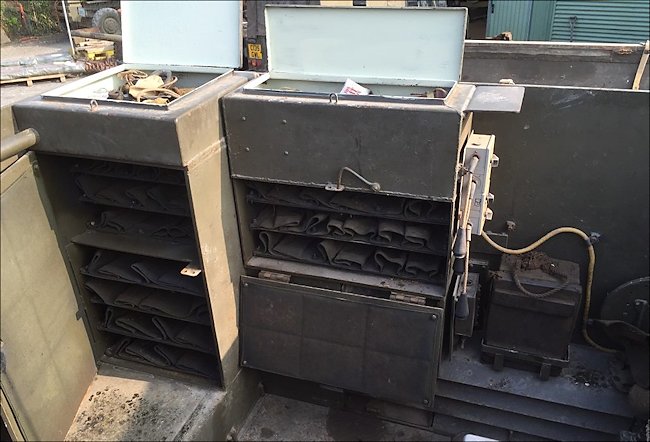
Sexton SPG Ammo storage lockers, One would be for the HE high explosive shell and the other would hold the charge cartridges.
Occasionally our action orders might begin: 'Take Post. Target Tanks'. But what sort? How many? What were they up to? We rarely knew. There is an indefinable sense lurking between firing at tanks and firing on exposed infantry, and gun crews tend to react accordingly, without prejudicing their orders.'
'At 0700 hrs on the 16th, the battle intensified as the Germans put in a determined counter-attack, and we had to engage them with concentrated fire, followed by a barrage. At 1200 hrs, at yet another gun position (679280), we were shooting due east at 90 degrees in support of an attack by 7th US Armoured Division to force a crossing over the Deurne Canal. At 1235 hrs we moved a little closer to the enemy at a new position (710367), where we fired 150 rounds per gun. The canal was successfully bridged at 0915 hrs on the 16th and we crossed over it in the direction of Meerselo in conformity with the Americans.'
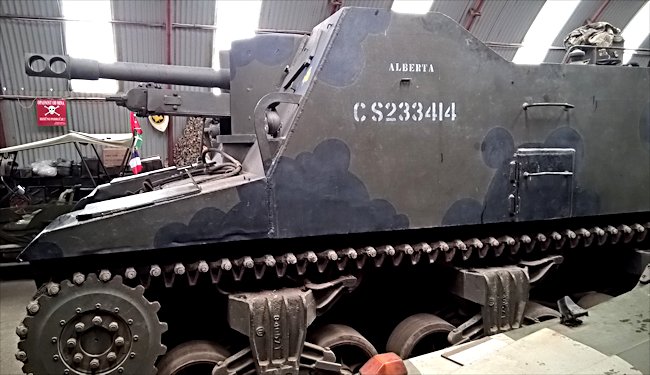
The side black hatch on this Sexton MkII SPG was used when loading shells into the vehicle.
Allied Artillery books

